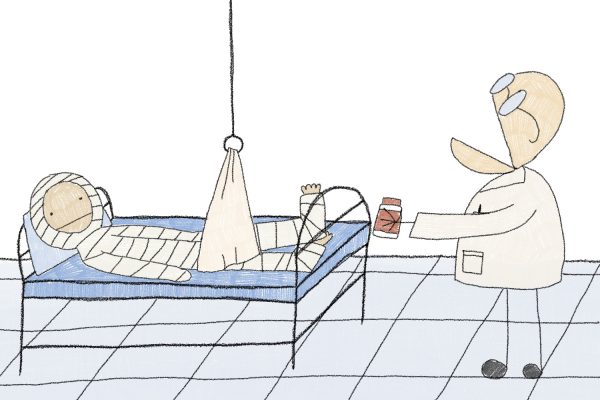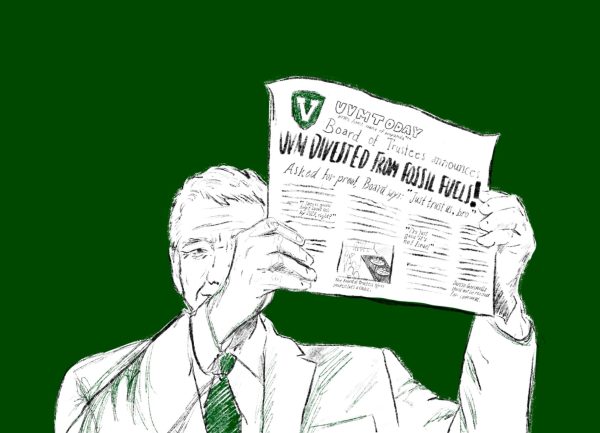City’s opportunity in cleaner energy
Ê
Upon arriving in Vermont, I head to Winooski to join friends for dinner. We meet at an apartment across the river from Joseph C. McNeil Generating Station.
The evening is cold with low clouds and some snow in the air Ñ more like winter than mid-March. I step out of my car and into the shadow of the plume of waste heat rising up from McNeil.
The west wind pushes the cloud of steam low over the apartment house. This evening, the plume is luminous with a strange orange color from whatever lights are reflected in it. To a child I imagine it might seem like a giant puffy monster.
Yet again I feel disappointed that waste on such a scale continues.
McNeil is jointly owned by Burlington Electric Department (BED), Green Mountain Power and Vermont Public Power Supply Authority. The generating station helps to meet the cityÕs need for electricity by burning wood chips from low-quality trees and harvest residues, leftovers from local saw mills and scraps from urban wood waste.
While McNeil provides nearly enough energy to power Burlington, it has the potential to do even more.
The next day I join the packed house at Sen. Bernie SandersÕ global warming conference in Montpelier.
A highlight of the day is a series of interlinking presentations by UVM students showing the current impacts of our fossil fuel binge.
One student graphically illustrates the declining percentage of decades in which Lake Champlain completely froze over, falling from near 100 percent in the early 20th century to zero for the past decade.
HereÕs what I see: on one hand, the McNeil plant discards vast volumes of waste energy as steam. On the other hand, nearby buildings on the hill and downtown burn fossil fuel for heating and cooling.
It would be a significant advantage if the energy required to heat and cool UVM Ñ one of the biggest energy consumers in Burlington Ñ could be supplied by thermal energy from McNeil.
ItÕs odd, then, to find that McNeil was designed and built to do just that. So why isnÕt it?
The UVM boiler emits enough carbon dioxide Ñ 27,000 tons in 2011 Ñ as to merit inclusion in the Environmental Protection AgencyÕs greenhouse gas mapping site.
This could be avoided and replaced by a carbon free source. Recycling excess heat from McNeil would not create additional carbon dioxide, but it seems any plans for action resulted in failure.
As I understand it, BED and UVM sat down in the early 1980s and, for whatever reason, could not work out a business arrangement to supply the campus with steam energy from McNeil. Synchronizing systems requires skill and planning, but the engineering of such a system was and remains simple.
In the early 1990Õs, Burlington District Energy Corp, a non-profit, tried to get a broad-based district energy system going in Burlington, this time based on hot water instead of steam. That effort failed.
Further, an engineering study by Evergreen Energy of St. Paul, MN, shows the economic feasibility of a district energy system in Burlington, viable even without UVM, the largest fossil fuel carbon polluter in the city.
For three decades reason has been tried and failed to elicit the cooperation necessary to achieve less wasteful district energy in Burlington. BED is a utility with a mandate to supply electricity, but it is not required to use the waste heat it produces.
UVM has a district heating system that it chooses to fuel with gas and some oil. Simple logic has not brought the two to agree that the waste energy from the one serves the needs of the other.
UVMÕs leadership in promoting such a plan would help lead to the creation of a much broader based district energy system serving the Medical Center Hospital and numerous other facilities in Burlington. And therefore, UVMÕs participation would be a major help.
A catalyst to get this going needs to be a commitment by the Burlington city council and the mayor to end the waste at McNeil. Likewise at UVM, a commitment to give its best to participate is needed.
With such commitments the best way to bring it into effect will become obvious, at least in so far as the city does not allow itself to be subject to any undue influence.
Given a clear commitment to end the waste, I suggest that a carrot and stick approach be enacted to get the desired result. Sen. Sanders put forward to the U.S. Senate the Sanders/Boxer Climate Legislation, S.332. The bill proposes a price on carbon dioxide of $20 per ton, the cost of which would rise at 5.6% a year for 10 years.12










![Can’t buy me [self] love](https://vtcynic.com/wp-content/uploads/2024/04/self-care-FINAL-600x398.jpg)
